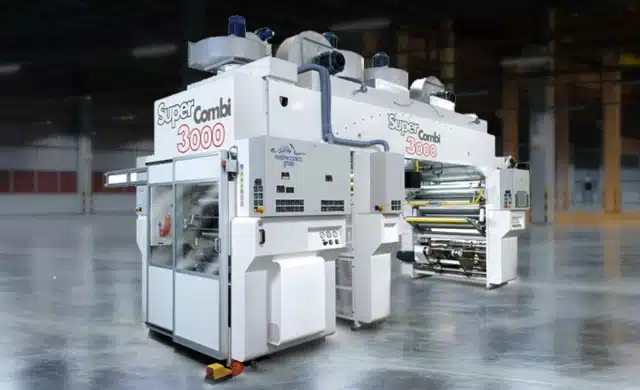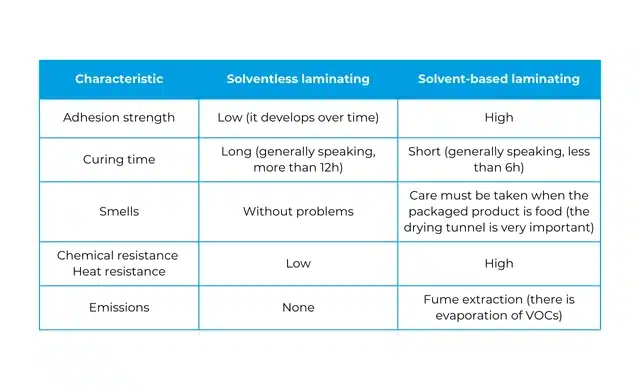
12 Jun Solvent-based laminating
By Jordi López, General Manger of RIEUSSET
Rieusset is a manufacturer of flexible packaging, labels and sleeves, mainly for the food and beverage markets, but also for the hygiene, pharmaceutical and tobacco markets. With its state-of-the-art machinery we are able to produce a high-quality product that meets or exceeds our clients’ requirements so that they consider us a partner to trust and grow with.
At Rieusset we use rotogravure printing presses –with their automatic cylinder engraving line– as well as digital presses, laminators, rewinders, sheeters, guillotines, die cutters and sleeve making machines. All of them are equipped with all the necessary control elements and corresponding manufacturing procedures to ensure that the production process creates a product that complies with the client’s specifications.
But there is one process that up until very recently we used to do externally: solvent-based laminating. This has now been remedied. Since last May, we have had a machine that can laminate with solvent-based adhesives, which will enable us to further improve the service we provide to our clients.
But what exactly is the lamination process?
As you all know, laminating is a process used by flexible packaging manufacturers to join two or more materials in order to improve the protective characteristics of the package, –such as oxygen, odor or moisture barrier– the physical resistance of the package itself or the resistance to perforation by the product, as well as other aesthetic, machinability or even cost properties.
Couldn’t we use only one material to pack everything?
No, there is no one material that has all the properties required to protect all the clients’ products since not all materials protect against all the elements that can attack them.
Wouldn’t it be great to have such a super-material!
If we looked for example at a very popular material such as polyethylene, which is a relatively inexpensive material, we would see that although it provides a good barrier to water vapor it does not provide a good barrier to oxygen. Or if we were to use a material like polyester which has a good oxygen barrier, we would see that, when sealing with heat, it is not sufficiently strong, as well as being more expensive. In the end, they all have their advantages and disadvantages and, depending on the application, the solution is a combination of them.
So how do we combine them?
For this we use adhesives and here we explain why we decided to incorporate a machine like the one we have recently acquired.
The machine we had at Rieusset allowed us to laminate with solventless adhesives, but the new machine will allow us to laminate with solvent-based adhesives.
Why should we use solvent-based adhesives if we already laminate with solventless adhesives?
Mainly because sometimes the lamination required by the client is subjected to demanding processes such as hot filling, pasteurization, sterilization or processes with high pressures and temperatures that require a very high lamination force. Also sometimes, when for reasons related to the aesthetics of the product a more severe lamination characteristic is required.
In a comparison of one type of lamination with the other, we can summarize as follows:
So, as you can see, not everything can be laminated in the same way, and although some applications can be solved using either option, this is not always possible.
By the way, the solvent-based laminator, unlike the solventless laminator, has a drying tunnel in which the solvents contained in the adhesive are evaporated, and this means that these emissions must be treated so that they do not reach the atmosphere. From a process point of view this is a very, very important issue to manage.
Are these all the types of laminating that can be done?
No, there are more, like water-based laminating, but this will be explained in a future post.
| We Manufacture: | Meet Rieusset: |



